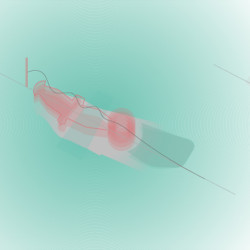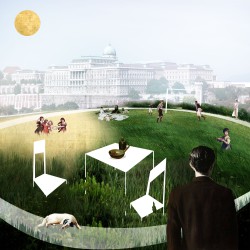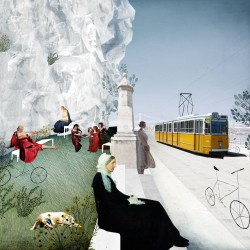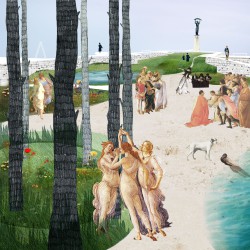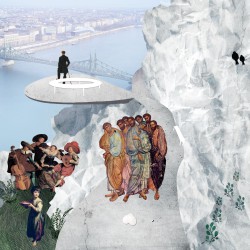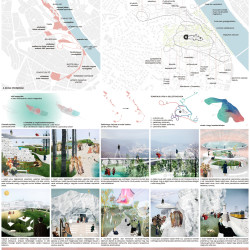If the whole area of Gellért Hill was flat, this UNESCO World Heritage Site would be the most visited and popular green area in the heart of Budapest, where friends have barbecue at the weekends or families jump in on the way home from kindergarten; a place where the elderly could possibly spend their active and passive recreation time, disabled people could get close to accessible nature, musicians would be jamming and people could start the day here with yoga. The only problem is that this hill, in the past 5-6 decades, became more like an enclosure, a dead exhibit only visited by tourists, than a lively urban space for local citizens.
Not much is missing, though.
_
_
As· we could see in the past 150 years, a solely governmental/municipal maintenance and operation is actually not efficient; everything (museum, night club, hotel, restaurant) has gone bankrupt in a short time and the venues dissolved into an abandoned, weathering set of stones.
A more complex, multiple participant community with municipal coördination would be able to create a socially and economically functional system that is able to rethink and renew itself by the time. The park community applies for financial funds and creates new jobs, art organizations maintain the Path of Art and Philosophy, the Church keeps the pilgrimage route and the Calvary, the Danube–Ipoly National Park Directorate developes the educational trails and the preserved flora and fauna, local citizens take care of the furnitures and playgrounds on the hillside, and the private sector operates the new-old Kiosk restaurant on the Northern side of the hill.
Restructuring the hill’s landscape, that the invasive species lately turned into a shapeless green mass, would create unique experiences for the pedestrians. Besides the usual urban body culture sets and furnitures (places for relaxing, walking, running, dance, playgrounds, balance activities, etc.), religious installations (White Heart Pilgrimage Route, Calvary, outdoor activities in front of the Cave Chapel) and the already existing educational trails, a new infrastructure of parks, planted with multisensory vegetation, would be served with widely accessible paths and roads. It is utterly important that a 21st-century urban park is also ought to serve people in wheelchairs, blind and visually impaired or autistic people.
The Citadella’s building on the very top of Gellért Hill is treated as a weathering geomorphic element in the landscape, not as a particular building. New entrances are created by demolishing parts of the robust stone wall; these pieces are reused as new limestone paving materials around the hillside, and also as new building materials when renovating the existing pavilions and the Kiosk restaurant.
_
Gellért Hill
21st-century landscape description
competition entry, purchased
Authors:
GUBAHÁMORI
+ Imre Bokányi
+ Hajnalka Tarr


